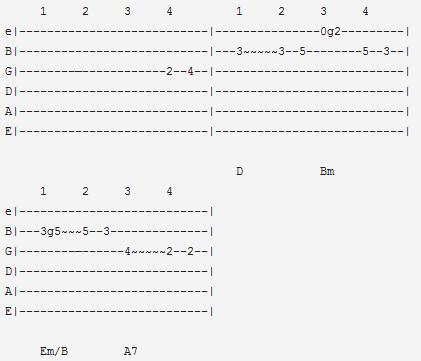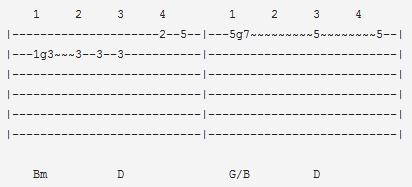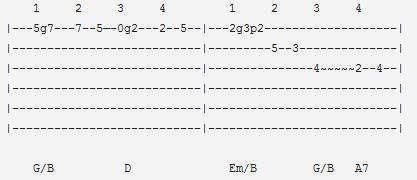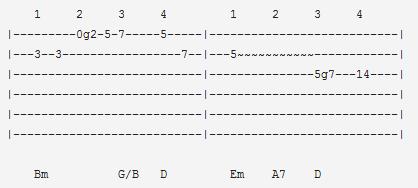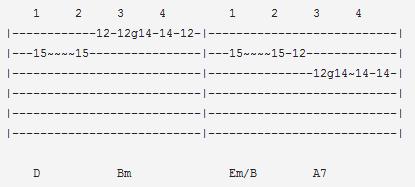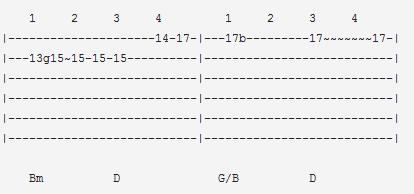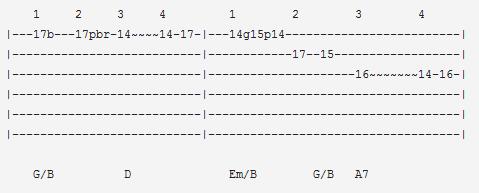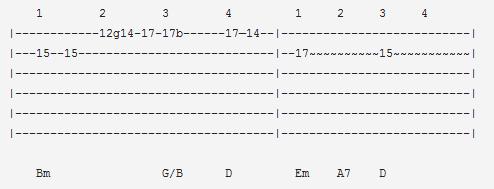Matt23 Celtic Electric - Loch Lomond SI Lesson
Celtic Electric - Loch Lomond
Contents |
SI Introduction
Hey GMC – I'm Matthew Craven.
I live in the UK. I'm 14 years old, and have played guitar for about 2 years. Before that I taught myself to play a bit on the keyboard and my sister taught me some chord theory, which was very useful for the guitar. I also had lessons for the oboe, which taught me the basics of music, which was even more useful for playing the guitar. Soon after I started the guitar I gave both up, but I have started playing the keyboard again.
Some of my favourite guitarists are Joe Satriani, Paul Gilbert and Andy McKee. I especially like Joe Satriani because of his brilliant phrasing and technique.
Some of my favourite bands are Dream Theater, Ozzy Osbourne/Randy Rhoads, Iron Maiden, and Rush. I also like quite a lot of modern metal bands, in particular Killswitch Engage. I also like odd songs by other bands of completely different styles, and I am a big fan of the Celtic style.
When I am not practising, I like to snowboard, compose, and play the keyboard.
Anyway, without further ado here's my lesson. I hope you enjoy it.
Introduction
Today I'm going to teach you a beautiful Scottish ballad called "Loch Lomond". The lyrics tell the story of a man who was captured during the Jacobite Rebellion and sentenced to death. He is singing to the other man in his cell about how he will never meet his true love again "on the bonnie, bonnie banks o' Loch Lomond". We can't play lyrics on the guitar so you should try and express the emotion of this song by putting a lot of feeling into your playing.
In this lesson we will be playing some short, on-beat grace notes which are known in Celtic music as "scotch snaps". You need to make sure to play these on the beat, and keep them very fast. Do this by picking the grace note and immediately "snapping" onto the main note. Also I advise playing the vibrato in this lesson quite thinly.
This song is in the Major Pentatonic scale, which is quite common in Celtic music. There are some out notes though (mostly from the Major scale), which are mainly grace notes.
I have included backing tracks of different speeds for you to practise to, as well as a full speed backing track with no click for you to play with when you have finished learning the lesson. I have also included a bonus rock style backing track.
In the lesson we will be using:
- Bending
- Vibrato
- Grace Notes
This lesson is quite easy, as "Loch Lomond" is a slow song so there is nothing very technically challenging to play.
Tone
Here is the Line 6 Podxt preset I used on this lesson. Podxt_Patch.l6t ( 2.09K )
For those of you without a Pod, I used a "Line 6 Chem X Amp", with a 4x12 Treadplate Cab (based on a Mesa Boogie cab), Screamer pedal (based on an Ibanez Tube Screamer), and I boosted the 1KHz frequencies with EQ. I also added a touch of chorus and reverb.
Details
Details
Key: D Major
Time Signature: 4/4
Tempo: 80bpm
Tuning: Standard E
Chord Progression:
D - Bm
Em/B - A7
Bm - D
G/B - D
G/B - D
Em/B - G/B - A7
Bm - G/B - D
Em - A7 - D
x2
I hope you enjoy this lesson!
Video 1
1st Bar: Here we are playing an "anacrusis". This means we are playing some notes before the first beat of the first bar of the section.
2nd Bar: I like to play the first note here with some fast, thin vibrato. Since the note is being played with the index finger, you should do the vibrato with your wrist. Try not to think of it as bending the note back and forth, but as quivering your hand. This should get you a nice vibrato for this note. Also remember to snap quickly from the E to the F# on the third beat. You should snap quickly from the first to the second note like this on every grace note in the piece.
3rd Bar: Here the two notes I like to put vibrato on are fretted by the ring finger. In my opinion this is a harder finger to do vibrato on, so you should get more control over the vibrato by supporting your ring finger with your middle finger. You should still think of the vibrato as a quivering of your hand.
Video 2
1st Bar: In the tab I have only put vibrato on the first note but if you want, try applying it to the following three D notes. It is a matter of personal taste so just experiment and find out what you like best.
2nd Bar: Here I like to make the second vibrato faster than the first, so make sure you don't play the first vibrato very fast, because then you can't make the second one faster.
Video 3
1st Bar: Here we have to play two "scotch snaps" in one bar, and one of them you have to change position for. Just practise them slowly until you can get them short, snappy and clean.
2nd Bar: In the tab it looks like there are three notes at the start. It is really just two with a grace note on the first one. Try to think of it this way, or you may get rhythmically confused.
Video 4
1st Bar: When you are changing positions here on the third note, try to keep it quick and clean. Also, even though you are sliding your finger up the string, pick the A note you are sliding to with your right hand. This will make the position change sound more fluent.
2nd Bar: Here you need to be careful what finger you play the second note with. Since the grace note is on the 5th fret you will probably want to just roll your index finger onto the G string and quickly slide up to the 7th fret. This isn't how you should play it here. Even if it means moving your index finger down the fret on the first note, you should play the second note with your middle finger. This is because the A note that follows it is played with the middle finger, so when you slide up to it from the 7th fret, it will sound more fluent if your middle finger remains on the fretboard between the two notes. You wouldn't be able to keep your finger on the fretboard if you had to change fingers.
Video 5
1st Bar: This is the start of the second section. It is very similar to the first except that it is played an octave higher. Remember to make sure your vibrato is thin, as it is a lot easier to bend the string when you are playing on higher frets.
2nd Bar: Here, the third and fourth notes are on the same fret, but different strings. This means you will have to roll your index finger from one string to the other. When you fret the note on the B string, try to use part of your finger slightly lower down than the tip, so you can roll your fingertip onto the G string.
Video 6
1st Bar: Here, as in the first section, you can hold the vibrato from the first note over the next three notes if you want. It is a matter of personal taste so find out what you prefer and play it.
2nd Bar: In this bar you should not put any vibrato on the first note, but put a fast vibrato on the second one. Also, just before the third beat, I like to bring the bend down, but only pick the A note with my right hand on the third beat. Make sure your bending is accurate by picking the 19th fret, then bending up to the same pitch from the 17th fret, so you get a feel of how big the bend should be.
Video 7
1st Bar: It is important you play the bends here accurately as they are a major part of the bar. On the F# note following the bends you should put in an extra effort to make the vibrato fast. Remember think of it as quivering your hand instead of bending the string back and forth.
2nd Bar: Again, on the tab it looks like there are three notes at the start. It is really just two with a grace note on the first one. Try to think of it this way, or you may get rhythmically confused. Also, keep the vibrato on the B near the end of the bar thin. High frets on the G string bend very easily so it's easy for your vibrato to end up wider than you intended.
Video 8
1st Bar: Here you have to play the grace note as a slide. Because of this it is harder to make the grace note sound as snappy as the others, so put in an extra effort to make it sound snappy. Again, make sure your bending is accurate.
2nd Bar: Here we have the last two notes of the piece. Here I deliberately play the first vibrato quite slow so the second vibrato sounds very fast in comparison. I like to slide down from the final D note to finish.
I hope you have enjoyed this traditional Scottish ballad, and learnt something from it too. Remember to practise any parts you are having trouble with slowly and patiently until you can play them cleanly. Above all remember to have fun with the lesson!
Please feel free to PM, email, or post any questions or comments you have about the lesson.
Good Luck!
--Matt
Files
Backing_Track___50bpm.mp3 ( 1.25MB )
Backing_Track___60bpm.mp3 ( 1.05MB )
Backing_Track___70bpm.mp3 ( 927.14K )
Backing_Track___80bpm.mp3 ( 818.91K )
Backing_Track__no_click____80bpm.mp3 ( 815.84K )




